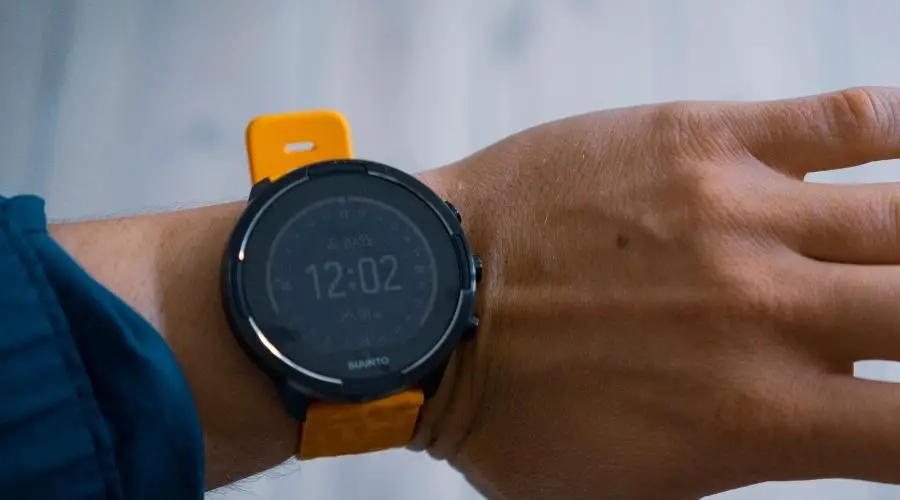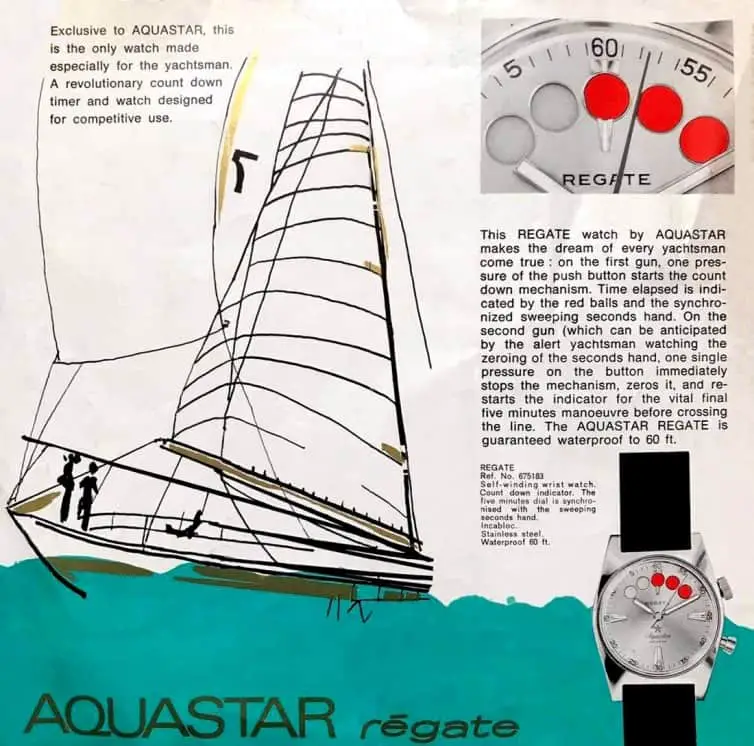Keeping time at sea or in a sailing race is an essential skill. This is where sailing watches (or yachting watches) can be extremely useful.
Many popular sailing watches have additional features to make them particularly valuable for sailors.
Let’s take a look at these features, plus a bit about the history and future of sailing watches.
What is a Sailing Watch (aka Yachting Watch)
If you’re in the market for one of the best sailing watches, there are some essential features you need to look out for.
This section will explore the features of most watches used to provide the best sailing experience, plus any nice to-haves.
Essential Features
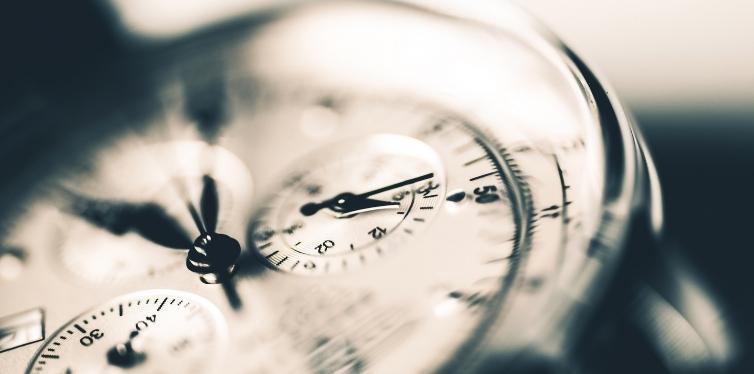
Waterproof
If you take a watch that isn’t at least water resistant to sea, then expect the worst.
Sailing watches are not as waterproof as diving watches, as there is no need, but they can typically withstand a short period of water immersion.
Even if you don’t end up in the water wearing your watch, the amount of spray will quickly kill a standard wristwatch if it doesn’t have proper water resistance.
Reliability
Designers creating watches for sailing understand their watches’ harsh conditions and build in reliability by using quality parts.
Anything mechanical you take to sea can fail even if it’s stainless steel. Your watch should have some level of water resistance.
The advent of the digital sailing watch has helped with reliability, thanks to a lack of moving parts.
However, many people prefer the more traditional look of a mechanical watch in particular because they don’t have to worry about battery life.
Countdown Timer
One essential feature of a great sailing watch, especially for racing, is the countdown timer. Every skipper’s aim is to cross the start line at precisely the right moment.
Too late, and you give other boats an advantage. Too early, you will be penalized.
The first countdown timers used a visual indicator, such as the red balls on the Aquastar Regate.
After you select the countdown feature, the red balls gradually turn white, synchronized with the second hand.
Audio Alerts
I’ve included this in the essential section, although some skippers may not consider it necessary. A lot is going on during a race start, and the skipper needs eyes in the back of his head!
An audio alert saves the need to keep checking the time to go and taking your eyes off the other competitors.
Sailing watch designers recognized the importance of audio alerts and were very ingenious.
Some of the best mechanical sailing watches even had holes in the backplate so the audio alert could be heard more clearly. The difficulty was maintaining the water-resistant qualities.
Chronograph
A watch is referred to as a chronograph if it includes stopwatch functions in addition to displaying the time.
Chronographs can be complicated, with numerous functions and dials. Basic versions will have a sweeping second hand, a minute, and possibly an hour dial.
Ease of Use
A clear display and simple operation are critical features when using a sailing watch.
If a function requires a complicated series of button presses to set up, you will very quickly stop using it. Equally, you can make mistakes if the display is difficult to read.
Watch Strap
Many skippers prefer to wear their watch outside the jacket sleeve for easy access. If that’s you, then make sure the strap is long enough.
This might be difficult if you’re only interested in watches made from stainless steel.
Extra Features
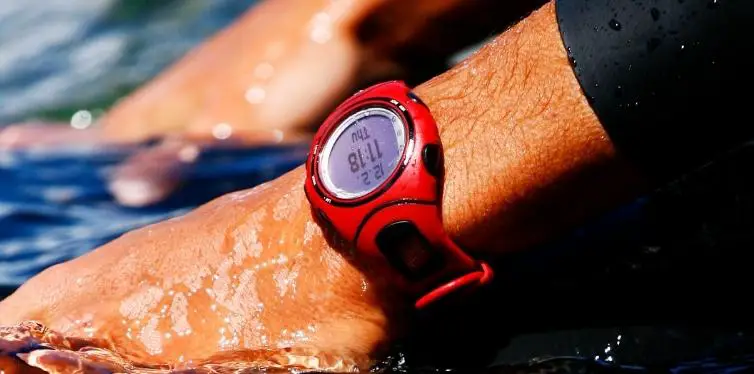
Moving Bezel
When combined with a chronograph, you can use a moving bezel to calculate speed and distance quickly.
The bezel is also helpful on its own and used in most dive watches to keep track of their remaining air supply.
For sailors, you can set the bezel to indicate a race start time or record elapsed time on a heading.
GPS
Some of the best sailing watches now offer a GPS function.
While I wouldn’t recommend this as your primary navigational aid, it might be helpful as a backup or quick reference check.
Compass
Watch compasses are available, but the accuracy is not great.
As with the GPS, it might be a useful quick reference, but that’s all.
Barometer
Keeping an eye on the weather is an essential skill.
A watch barometer won’t be helpful enough to take accurate weather readings, but it could alert you of a change.
A Brief History of Sailing/Yacht Watches
You can trace the history of sailing/yacht watches back to the 1950s and the development of the rotating bezel back to the 1920s.
The rotating bezel was patented in the 1950s by JeanRichard watches, and this is where the story of watches used for sailing really begins.
Developing a bezel was critical to the success of watches such as the Aquastar Regate, regarded as the first dedicated sailing watch.
Breitling joined Aquastar in the 1960s, adapting their Co-Pilot aviation watch for sailing use.
In the 1970s, Omega introduced their Seamaster Yachting Watch with a chronograph function, an adaptation of their popular Seamaster.
All these models of yacht watches were aimed at the racing and regatta market.
Until the mid-1990s, the hold time before the starting gun was historically set to 5 – 10 minutes. At the 1996 Olympics, the Olympic Committee reduced this time to 3 – 6 minutes.
Until this point, the design of most sailing watches or yacht watches offered countdowns in 5-minute analog increments, but they had to adapt for Olympic Games racing.
Most manufacturers now produce a dedicated Olympic sailing watch, which is specifically used for sailing.
The standard functions of a sailing watch have changed little since the mid-1990s, but an interesting development has been the introduction of digital watches.
Digital Sailing Watches: The New Age
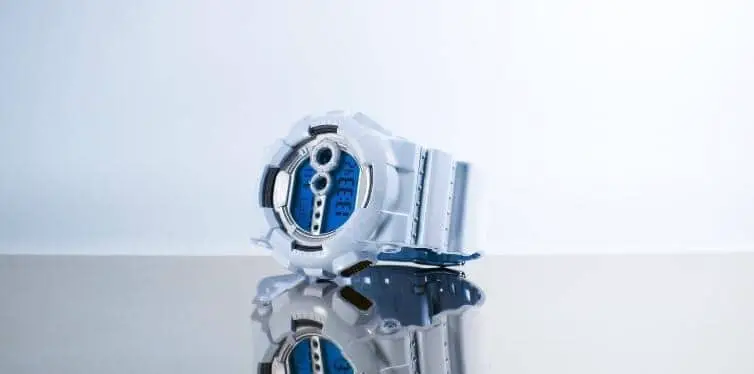
Maybe it’s an age thing, but people that grew up with traditional analog watches or mechanical watches tend to prefer them to modern digital alternatives.
There are practical aspects, of course. You have to read the information using a digital display, whereas an analog display is visual, and you may prefer that.
Also, battery life is something that should definitely be considered along with whether the construction material is stainless steel or something rubber or plastic based.
The flip side is that digital displays (ideally with good water resistance) can offer much more information, and functions are easy to implement.
For example, the hold time change for the Olympic Games didn’t affect digital watches since you can set the countdown timer to any value, unlike their analog counterparts.
One huge advantage of digital watches is the cost. Without needing expensive and complicated watch movements, they can mass-produce them to offer more affordable sailing watches.
Not only has this made sailing watches more accessible for all, but you can also carry spares without breaking the bank!
Final Thoughts
Sailing or yacht watches are vital pieces of equipment for any sailor. Accurately arriving at the start line at a regatta is much simpler when using a good sailing watch.
They also come in handy when simply out on the water for the day or if you’re having a live-aboard adventure.
The original watches intended for sailing were often stainless steel analog timepieces.
The introduction of digital technology has made them available to many more people, placing them among the best sailing watches available today.

